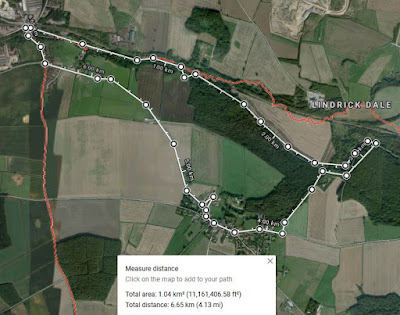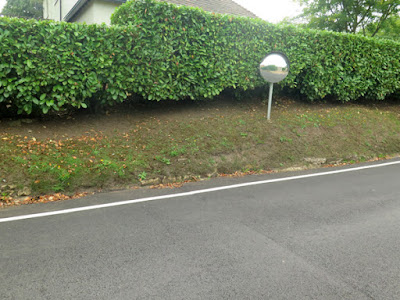Continuing my exploration of the historic architecture and building stones of Worksop, having passed by a magnificent example of green architectural faience produced by Burmantofts of Leeds, at the French Horn Hotel, I reached the end of Potter Street.
Here, Worksop Town Hall, dated to 1851 and originally built as the Corn Exchange, has a south elevation that has the upper levels built in red brick, with massive buff sandstone – displaying some red colouration - used for the vermiculated and rusticated masonry to the ground floor, the quoins and the window dressings.
 |
| Worksop Town Hall |
The drinking fountain at ground floor level is made of grey granite from the Cornubian batholith in south-west England, with distinctive large crystals of white feldspar, and Red Mansfield sandstone panels used for decorative effect.
 |
| The drinking fountain at Worksop Town Hall |
The west elevation of the town hall is very austere, compared to the front elevation, and has an upper section of built of red brick and a ground floor of yellowish limestone, which is squared and coursed but not of ashlar quality.
Opposite the south-west corner of Old Market Square, which is only 200 metres from the site of Worksop Castle, the Old Ship Inn - dating to the C16 - has a south wall that is built out of another thinly bedded cream/pink limestone.
Having had a good walk around areas of Worksop that I hadn’t seen before, I then headed north along Bridge Place. There are numerous listed buildings dating to the C18 and C19 here but, with most of these being built with brick and often rendered, I didn’t take too much notice of them.
The most ornate buildings are the Victorian banks, some of which are still in use, and these are mainly built in medium grained sandstone ashlar, with elaborately carved details. Often used together with polished granites, the architects took advantage of the growing railway network in the C19 to specify the best quality sandstone from places like Darley Dale in the Derwent Valley.
Noting the stone used to restore the parapet at Barclays Bank, I took a diversion to Memorial Avenue to have another look at the Portland limestone and grey granite war memorial and the area around Worksop Central Library, which I hadn’t yet seen, before my investigations were cut short by the rain that was beginning to fall.
Having only enough time to quickly photograph the library and the grey granite horse trough outside it, I decided that a walk around The Canch park would have to wait for another day and I headed across to ASDA - to take shelter from the rain and do some essential shopping before continuing to the railway station.
My final stop of the day was at St. John’s church on Gateford Road, where I was particularly interested to see the difference between the very pale grey/white dolomitic limestone used in its original construction – thought to be from Lady Lee quarry – and the pale cream/yellow variety used for the restoration to the west door.















































